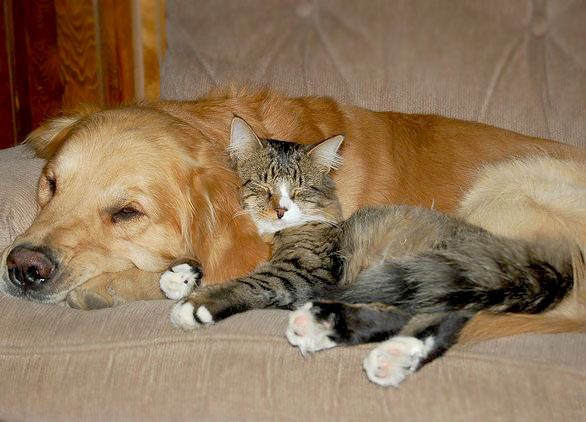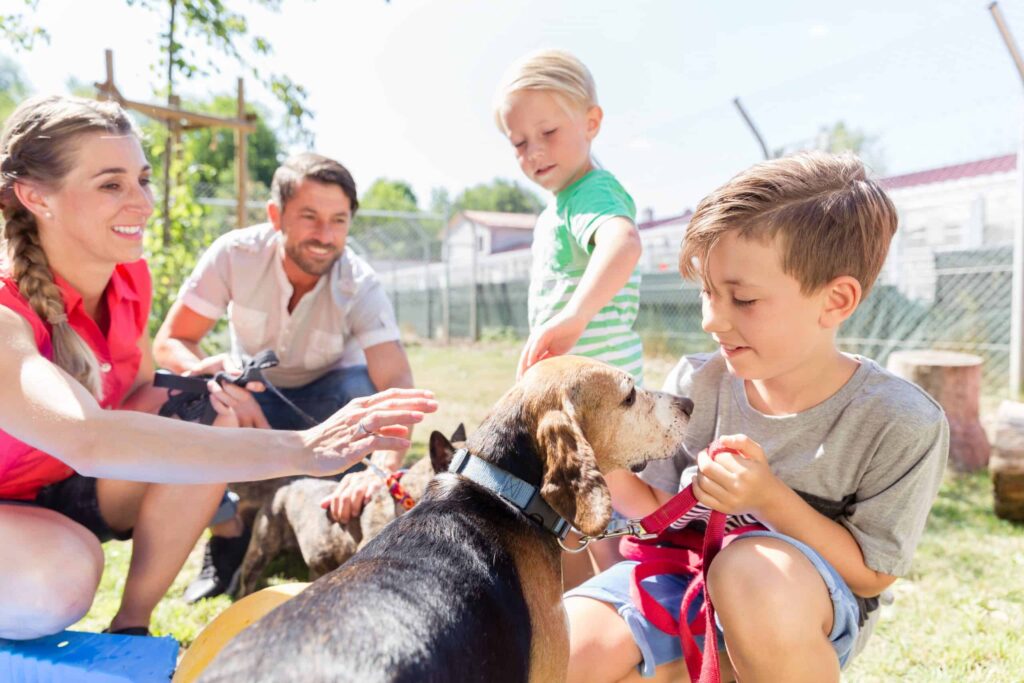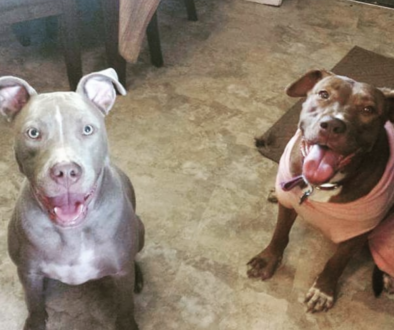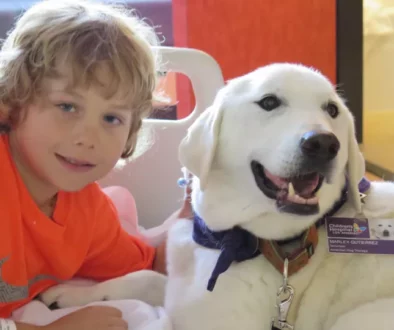The Joy of Multi-Pet Homes: Adopting Siblings and Friends
Are you considering adding another furry friend to your family? You’re not alone. The idea of multi-pet homes is gaining popularity among pet lovers. Having multiple pets can bring immense joy and create a harmonious environment for both you and your furry companions. In this article, we will explore the advantages of adopting siblings or friends for a multi-pet home and provide insights on how to successfully integrate them into your family. Over the years, the concept of multi-pet homes has gained considerable attention.
Pet owners are realizing the benefits of having more than one pet, as it can enhance both the pets’ and owners’ lives. From companionship to entertainment, adopting siblings or friends for your furry family can lead to a wealth of unforgettable experiences.
Understanding the Dynamics of Multi-Pet Households
Understanding the dynamics of multi-pet households is essential when considering adopting siblings or friends for your furry family. Each pet has its own unique personality and preferences, and it’s important to know and understand these traits to ensure a harmonious living arrangement.
Knowing your pets’ personalities and preferences allows you to anticipate how they will interact with each other. For example, if you have a more laid-back and easygoing pet, they may be more accepting of a new companion. On the other hand, if you have a pet that is more territorial or independent, introducing a new pet may require more time and careful planning.

Siblings or friends can complement each other in a multi-pet home. They provide companionship and emotional support to each other, especially when their human family members are not around. Siblings, in particular, often have an innate understanding of each other and form a strong bond. They can engage in playtime, cuddle together, and keep each other company during quiet moments.
Having siblings or friends can also alleviate feelings of loneliness or boredom for your pets. Since they can interact with each other, they have a constant source of entertainment and stimulation. This can be especially beneficial if you have a busy schedule or if your pet’s favorite human companion is away for extended periods.
Furthermore, siblings or friends can learn from each other and develop valuable social skills. They can engage in friendly competition or cooperation during play and learn appropriate behaviors from one another. This can result in well-rounded and socially adept pets who are comfortable in various situations and with different animals.
Considerations for Adopting Siblings
When considering adopting siblings for your multi-pet home, there are several important considerations to keep in mind. Adopting littermates can have some unique advantages, but it’s also crucial to be aware of potential challenges and take necessary precautions. Similarly, adopting friends as new additions to your existing furry family can bring numerous benefits, such as building relationships and reducing loneliness. Let’s explore these considerations and benefits in more detail.
First, let’s focus on the advantages of adopting littermates. One significant advantage is the strong bond that already exists between them. Littermates have grown up together, sharing experiences, and developing a deep connection. By adopting siblings, you are ensuring that they can continue their lifelong journey together, providing each other with constant companionship and support. This can be especially comforting for the pets when faced with the stresses and changes that come with a new home.
However, it’s important to be aware of the challenges and precautions associated with adopting littermates. One challenge is the potential development of littermate syndrome. Littermate syndrome refers to the intense bond that can develop between siblings, resulting in behavior problems and dependence on each other to the point of distress when separated. To mitigate this issue, it’s crucial to provide individual attention, training, and socialization for each sibling. Treating them as individuals and encouraging independent interactions with humans and other pets can help prevent or minimize the effects of littermate syndrome.

Benefits of Adopting Friends
Now let’s explore the benefits of adopting friends as new additions to your existing furry family. Introducing a new pet to an established group can have a positive impact on all members involved. For the existing pets, it presents an opportunity to build new relationships and expand their social circle. It reduces feelings of loneliness, especially if one of the pets has recently experienced the loss of a furry companion. The companionship and interactions among new friends can provide entertainment, stimulation, and enrichment for all, fostering a happier and more lively environment.
When introducing new pets to an existing furry family, it’s important to do so gradually and with care. Controlled introductions are key to ensuring a smooth transition. It’s recommended to separate the new pet initially, allowing them to get acquainted with the scent and presence of the existing pets through door or crate interactions. Slowly progressing to supervised face-to-face introductions in a neutral territory can help minimize potential conflicts and territorial behavior. Patience and positive reinforcement play a vital role in building these new relationships and ensuring a harmonious coexistence.
Tips for Successful Integration of Siblings or Friends
Integrating siblings or friends successfully into a multi-pet home requires careful planning and patience. Here are some tips to help you ensure a smooth transition and promote a harmonious environment for all your pets:
- Controlled introductions and gradual acclimation: Introduce the new pet to the resident pets in a controlled manner. Start with scent exchanges by swapping bedding or using pheromone sprays. Gradually progress to visual introductions through baby gates or crates before moving to face-to-face interactions. Take it slowly, allowing each pet to acclimate to the other’s presence and scent.
- Managing territorial behavior and potential conflicts: Territory is important to pets, so give each pet its own space. Provide separate feeding stations, litter boxes, and resting areas to minimize potential conflicts over resources. Supervise interactions between pets, and be prepared to intervene if any aggression or tension arises. Ensure that all interactions are positive and rewarding.
- Promoting a harmonious multi-pet environment: Establish a routine that includes dedicated time for each pet individually. This could include play sessions, grooming, or training. By providing individual attention, you help prevent jealousy and competition for your time and affection. Additionally, create an environment that is enriched with toys, scratching posts, and cozy corners for each pet to enjoy.
- Encouraging bonding through play and shared activities: Engage your pets in interactive play sessions where they can bond and have fun together. Playtime promotes socialization, reduces anxiety, and allows them to expend energy in a positive way. Consider activities such as puzzle toys, group walks, or even training sessions that involve multiple pets.
- The positive impact of multi-pet homes on human well-being: Multi-pet homes not only benefit animals but also have a positive impact on human well-being. Pets offer emotional support, companionship, and unconditional love. Having multiple pets increases opportunities for social interaction and strengthens family bonding. The joy and laughter they bring have a remarkable effect on our overall happiness.
By following these tips, you can create a harmonious multi-pet environment where your pets can thrive and build strong relationships with each other. Remember that each pet is unique, and it may take time for them to adjust and form bonds. With patience, consistency, and plenty of love, your multi-pet home can be a source of joy and fulfillment for all involved.
Addressing Common Concerns in Multi-Pet Households
In multi-pet households, it’s common to encounter concerns regarding resource management, health and hygiene, and the need for additional support. Let’s address these concerns and discuss some helpful resources available for multi-pet families.
- Managing resources and ensuring fairness: Ensure that each pet has access to necessary resources such as food, water, resting areas, and toys. Monitoring meal times and feeding each pet separately can help prevent food-related conflicts. Provide ample litter boxes and establish a cleaning routine to maintain hygiene and prevent territorial issues. It’s important to be mindful of each pet’s individual needs and ensure fairness in distributing attention, affection, and resources.
- Dealing with health and hygiene issues: Regular veterinary care is essential for each pet in a multi-pet household. Schedule routine check-ups, and vaccinations, and follow recommended treatments for flea, tick, and parasite control. Maintain good hygiene by grooming your pets regularly, including brushing their teeth, trimming nails, and ensuring a clean living environment. Keep an eye out for any signs of illness or stress, and address them promptly to prevent any spread or escalation of issues.
- Resources and support for multi-pet families: There are various resources available to help multi-pet families navigate their unique challenges. Pet care books, online articles, and reputable websites can provide valuable information on topics ranging from behavior management to health care. Local animal shelters or rescue organizations may offer support services, such as behavior consultations and training classes. Additionally, there are numerous online communities and forums where pet owners can share experiences, seek advice, and find support from other multi-pet households.
- Professional guidance and training options: If you’re facing specific challenges in your multi-pet household, consulting with a professional pet behaviorist or trainer can be highly beneficial. These professionals can provide personalized guidance, recommend training techniques, and help address any behavior issues that may arise. They can also assist in introducing new pets or managing conflicts within the household. Seek recommendations from your veterinarian or local animal organizations to find qualified professionals in your area.
- Online communities and forums for sharing experiences: Online communities and forums dedicated to pet owners are valuable platforms for sharing experiences, seeking advice, and connecting with other multi-pet households. These platforms can provide a sense of camaraderie, as well as insights and tips from individuals who have faced similar challenges. They may offer a range of topics, from general pet care to specific discussions on multi-pet dynamics and issues.

Conclusion
Adopting siblings or friends for a multi-pet home can bring immeasurable happiness and fulfillment. Understanding the dynamics of multi-pet households, considering the advantages of adopting siblings or friends, and following integration tips are key to creating a thriving and loving environment. Embrace the joy of multi-pet homes and unlock a world of unconditional love and companionship.
Also Read:
Pet Care Tips for Cats for Beginners
Pet Care Tips for Dogs for Beginners



